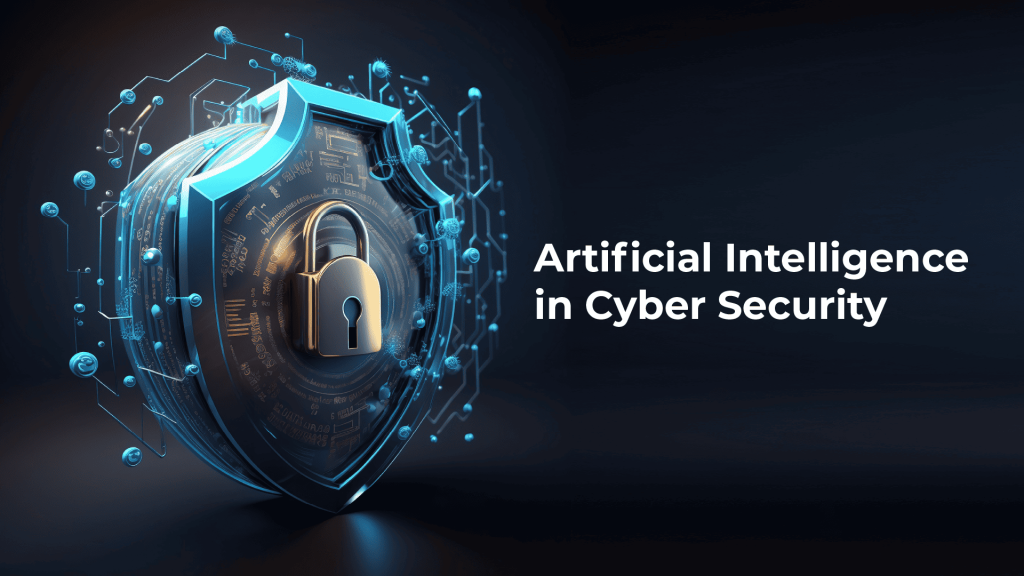In today’s hyperconnected world, data is the new gold and cyber threats are the new weapons. As digital systems grow more complex, traditional security measures are no longer enough to protect sensitive information. Enter Artificial Intelligence (AI) the next frontier in cybersecurity.
Artificial Intelligence is transforming how organizations detect, respond to, and prevent cyberattacks. With the power of machine learning, behavioral analysis, and threat detection algorithms, Artificial Intelligence is strengthening digital defenses in ways humans alone never could.
Table of Contents
The Changing Landscape of Cybersecurity
Cyberattacks are increasing in both frequency and sophistication. From ransomware and phishing scams to zero-day exploits and nation-state attacks, modern threats are evolving faster than traditional defenses. According to IBM’s Cost of a Data Breach Report 2024, the average breach costs organizations over $4.5 million, making cybersecurity not just an IT concern but a business imperative.
To keep up with these rapidly evolving threats, companies are turning to systems that can learn, adapt, and predict providing proactive rather than reactive protection.
How It is Revolutionizing Cybersecurity
1. AI-Powered Threat Detection
Traditional security systems rely on predefined rules and signatures. Artificial Intelligence, on the other hand, identifies anomalies and suspicious patterns in real time. By continuously analyzing network traffic, user behavior, and system logs, Artificial Intelligence can detect previously unknown threats before they cause harm.
For example, Darktrace uses machine learning to understand an organization’s “digital DNA,” detecting unusual activity that could signal a cyberattack.
2. Predictive Cyber Defense
Artificial Intelligence enables predictive analytics that forecast potential vulnerabilities or attack vectors. Using historical data, it can identify weak points in a system before hackers exploit them. This proactive defense approach significantly reduces the chances of breaches.
3. Automated Incident Response
When an attack occurs, speed is crucial. Artificial Intelligence automates threat response processes isolating infected systems, blocking malicious IP addresses, and even deploying patches instantly. This reduces human response time from hours to seconds.
IBM QRadar and Cortex XSOAR are leading platforms using Artificial Intelligence to coordinate automated, multi-layered incident responses.
4. Phishing and Fraud Detection
Phishing remains one of the most common forms of cybercrime. AI-driven email filters and NLP models analyze millions of emails to detect subtle linguistic and behavioral cues that indicate phishing attempts.
Financial institutions use Artificial Intelligence models to detect fraudulent transactions by learning users’ spending patterns and flagging anomalies in real time protecting both businesses and customers.
5. Behavioral Biometrics and Identity Protection
Artificial Intelligence enhances identity verification by analyzing behavioral biometrics such as typing rhythm, mouse movement, and device usage. Unlike traditional passwords, these metrics are nearly impossible to fake.
Tools like BioCatch and Ping Identity leverage Artificial Intelligence to monitor digital identity continuously, offering adaptive authentication without compromising user experience.
Machine Learning in Cyber Defense
Machine learning is the brain behind Artificial Intelligence security systems. It enables algorithms to improve detection accuracy over time. There are three main types:
- Supervised Learning: Trained on labeled data to recognize known threats.
- Unsupervised Learning: Identifies new, unseen patterns or anomalies.
- Reinforcement Learning: Continuously learns optimal defense strategies based on trial and feedback.
These models work together to create a multi-layered, intelligent security ecosystem.
The Role of Artificial Intelligence in SOC (Security Operations Centers)
Security teams are overwhelmed by millions of alerts daily, many of which turn out to be false positives. Artificial Intelligence helps filter, prioritize, and contextualize alerts, allowing analysts to focus on the most critical threats.
SOC tools like Splunk AI and Microsoft Sentinel can correlate data across multiple sources, automatically flagging coordinated attacks and providing real-time threat intelligence.
Challenges and Risks
While Artificial Intelligence strengthens cybersecurity, it also introduces new risks:
- AI-Driven Cyberattacks: Hackers can use Artificial Intelligence to create deepfakes, automate phishing, or bypass security systems.
- Data Privacy Concerns: Training Artificial Intelligence models requires vast amounts of sensitive data, which can be vulnerable if not properly secured.
- Bias and False Positives: Poorly trained models can produce inaccurate alerts, leading to security fatigue.
- Dependence on Automation: Overreliance on Artificial Intelligence may reduce human oversight, allowing sophisticated attacks to slip through.
To counter these challenges, a hybrid approach combining automation with human expertise is essential.
The Future
The future of cybersecurity lies in adaptive, intelligent systems that evolve alongside threats. Key trends shaping the next generation of Artificial Intelligence security include:
- Quantum-resistant encryption to counter quantum computing threats
- Federated learning for privacy-preserving threat intelligence sharing
- Explainable AI (XAI) for transparent and accountable decision-making
- AI-driven deception technology to mislead and trap attackers
In the coming years, Artificial Intelligence will be the backbone of global digital defense detecting, predicting, and neutralizing threats at machine speed.
Conclusion
Artificial Intelligence has become the new frontline of cybersecurity defending against ever-evolving threats that humans alone cannot handle. By harnessing machine learning, automation, and predictive analytics, Artificial Intelligence empowers organizations to build smarter, faster, and more resilient security systems.
However, the human element remains irreplaceable. Cyber defense is strongest when AI’s precision meets human intuition. Together, they form a shield that protects the digital world from the growing tide of cyber threats.
Also Check Future of Artificial Intelligence – Powerful Guide – 2025




2 thoughts on “AI and Cybersecurity – Powerful Digital Defense – 2025”